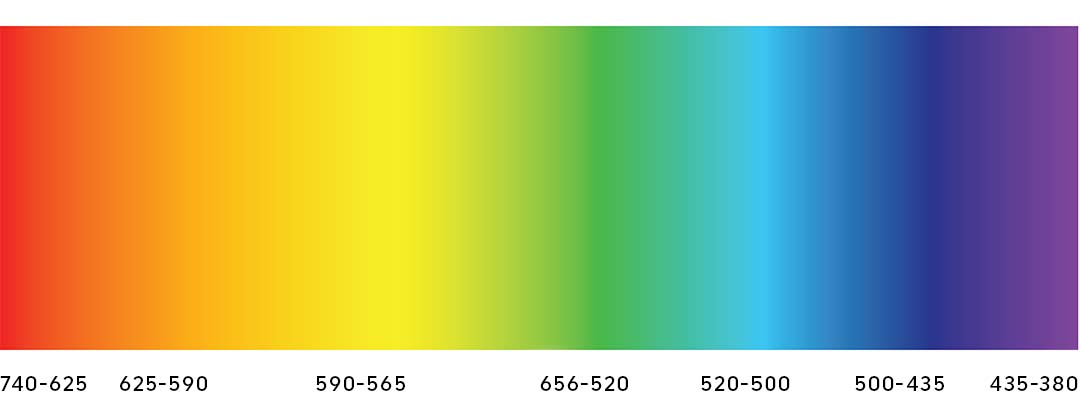So what exactly is color?
What the eye perceives as color is electromagnetic radiation in certain wavelengths. The light can be split into seven colors – the colors of the rainbow, also called spectral colors or monochromatic colors. Each of the colors has its wavelength. The wavelengths of visible light are from 380 nm to 750 nm. We also have many other types of electromagnetic rays, such as X-rays, infrared and ultraviolet rays, but these are not visible to our eyes.

Words and expressions from the color theory
In color terminology, primary colors, secondary colors, and tertiary colors are often referred to. The primary colors of the pigments are red, blue and yellow. These are the pure colors, which you can not make by mixing other colors. If we mix blue and yellow we get green – red and blue turn purple – red and yellow turn orange – these are secondary colors. Secondary colors can again be mixed into tertiary colors.

The color circle shows what are base colors or elemental colors. The six basic colors are yellow, red, blue, green and white and black. Black and white are not really colors and are not found in the color wheel.
Complementary colors are colors that are on opposite sides of each other in the color wheel. The complementary color to red is green, the complementary color to yellow is purple, etc. If you want to achieve strong contrasts, you can use colors that are complementary.
If you stare at a red field for a long time, and move your eye, you will see the complementary color – green. This phenomenon is called afterimage.
Saturated colors are colors that are as powerful as they can get. We get shades of color when we mix a base color with black or white.








